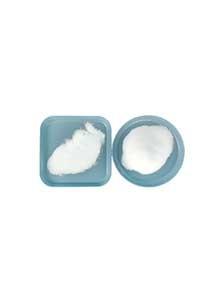


| Price | Negotiable |
| MOQ | 20KG |
| Delivery Time | 3-8 working day |
| Brand | Easun |
| Place of Origin | China |
| Certification | Rosh, Reach |
| Model Number | ES203 |
| Packaging Details | 20KG/bag |
| Payment Terms | T/T |
| Supply Ability | 4000000 |
| Washable Property | 40℃ Excellent 60℃ Good 90℃Ordinary | Composition | Copolyester |
| Place of Origin | China | Melt Point(DSC) | 105-115 ℃ |
| Packaging Details | 20KG/bag | Color | White |
| Product type | Heat Transfer Adhesive Powder | Melt Flow Index | 30±7 g/10min |
| Model Number | ES203 | Supply Ability | 4000000 |
| Appearance | White Powder | Density | 1.20±0.02 g/cm³ |
| Certification | Rosh, Reach | Brand Name | Easun |
| Payment Terms | T/T | Price | Negotiable |
| Delivery Time | 3-8 working day | Minimum Order Quantity | 20KG |
| Packaging | 20KG in one PE bag+Brown paper | Powder size range | 0-80μm; 80-170μm;150-250μm |
White
80μm
170μm
PES
Hot
Melt
Powder
Used
In
Textiles
And
Garments
Heat
Transfer
Adhesive
Powder Product
model:
ES203
Description:
copolyester
thermoplastic
powder hot
melt
adhesive.
Application: DS203
is
used
in
textiles
and
garments,
automotive
interiors,
filters,
shoe
materials,
heat
transfer
pastes,
flocking
pastes
and
bronzing
pastes.
Physical
Characteristics:
| Property | Criterion |
| Appearance | White powder |
| Composition | Copolyester |
| Density ASTM D-792 | 1.20±0.02 g/cm³ |
| Melt Point DSC | 105-115 ℃ |
| Melt Index ASTM D-1238 | 30±7 g/10min |
| Powder size range | 0-80 um |
| 80-170 um | |
| 150-250 um |
Technical
Parameters:
| Bonding parameters (for reference only) | Temperature | 125-140℃ |
| Press | 1.5-3.0kg/cm2 | |
| Time | 10-18S | |
| Washing Resistance | 40℃ | Excellent |
| 60℃ | Good | |
| 90℃ | / |
Packaging and Storage Conditions:
| Packaging | 20KG in one PE bag+Brown paper bag |
| Storage Conditions | Stored in dry unopened packaging at room temperature for 12 months. High temperature and pressure will cause agglomeration. The trays cannot be double-pressed. |
1.
Bonding
temperature
and
pressure
and
time
relate
to
the
bonding
strength
of
the
film
to
the
material.
The
bonding
temperature
must
be
close
to
the
temperature
set
by
the
machine,
the
pressure
must
be
uniform,
and
the
mold
and
press
rolls
must
be
flat.



